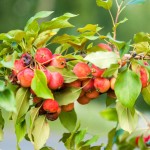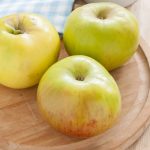
Cider apples are returning to the fore as a set of cultivars that not only need to be cherished but protected. They have strong associations with a national beverage industry in both England and Wales.
It is best to group the apples into four distinct categories for sensory purposes. The ‘sweets’, the ‘bittersweets’, the ‘sharps’ and the ‘bitter sharps’. No cultivar has ever been regarded as producing the definitive cider flavour which is a reflection of how varied the palette is for the product. Mixing the various varieties to achieve an appropriate balance to meet a sweet or dry flavour with smoothing in between is perhaps one of the great arts of the cider maker. In fact the skill is turning those sugars residing in the apple into alcohol without destroying the flavour.
Sensory Profile
There is surprisingly little research on the sensory profiling of cider apples in recent years given its resurgence in interest. Fundamentally, the cider apple provides a mix of sweetness which is coupled with bitterness and sharpness. Fermentation performs the rest – converting sugars into alcohol and in so doing producing a range of flavours which become the defining characteristic of the product. The best balance is thought to be a mix of 66% bittersweets with 33% bittersharps. Ultimately, the flavour depends on a key aspect of cider – the fermentation process itself.
The generation of alcohol from sugar by yeasts is probably one of the best understood processes – when it comes to beer. With cider, fermentation is not as well defined, The yeast that arrive from natural sources for fermentation are probably the least characterised too. It is probably the case that each cider maker has a particular yeast associated with their orchards. It is also the case that a variety of different yeasts have their part to play in the fermentation. Besides the classic beer yeast Saccharomyces cerevisiae, there will be a number of sub-types. Factory yeasts as they are known reside not only with the cider apple but in the tanks, the presses and equipment are retained from one year to the next.
Old Wives Tales
One old wife’s tale is the addition of protein in the form of a rat or pigs head to the batch. In fact an old piece of lamb or mutton was incorporated to provide enough nutrient to support the yeast during fermentation. It is not a practice that is adopted in modern day production. A mouse taint may develop if the nitrogenous content is not managed properly. It is often a characteristic of a badly looked after fermentation.
We discuss in another article what is needed for a great cider apple orchard.



Leave a Reply